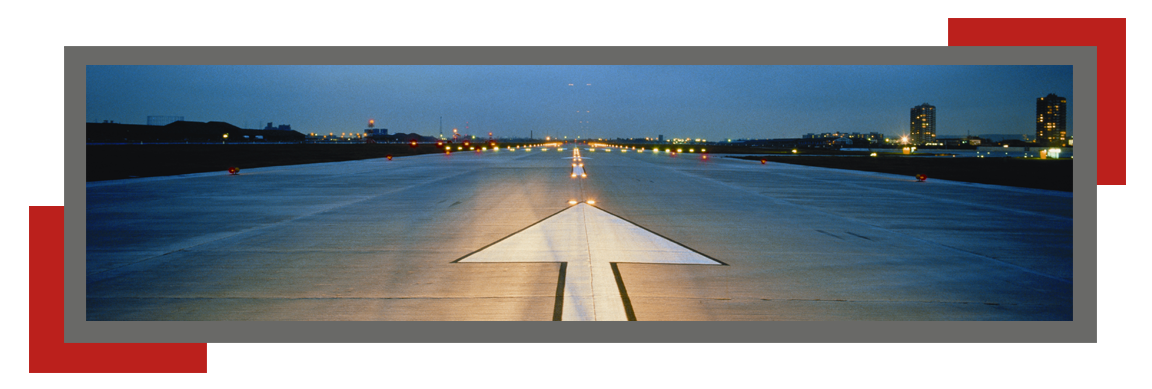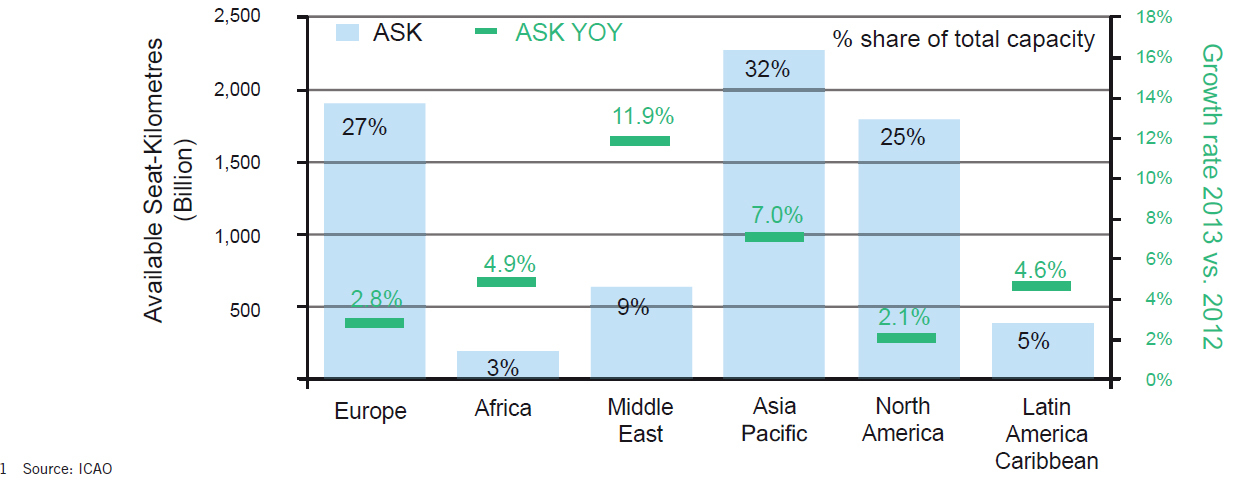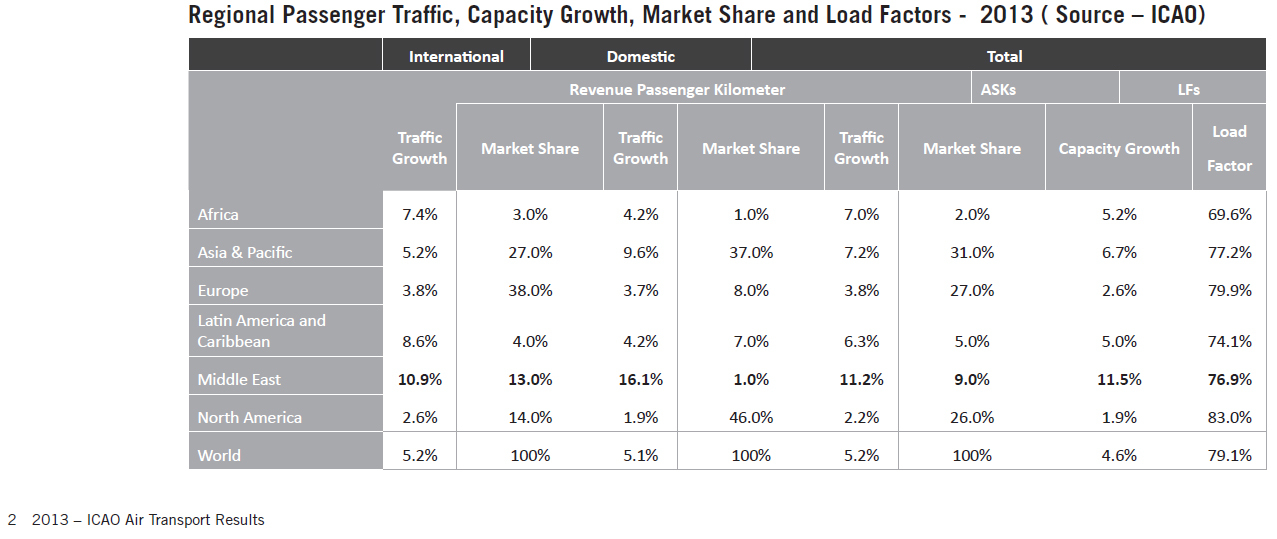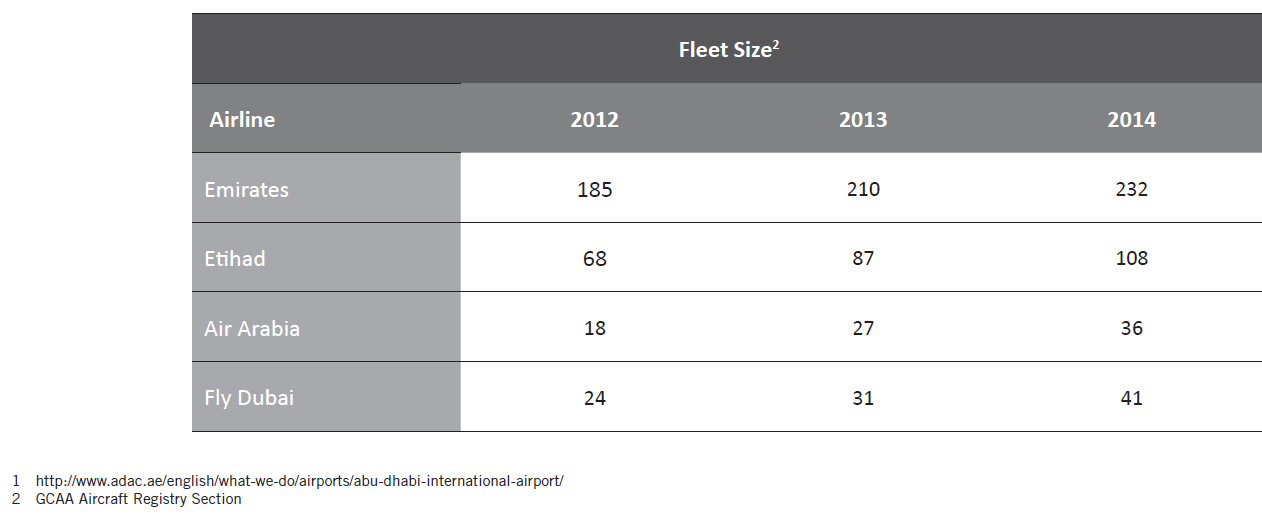UAE AVIATION SECTOR
 The Asia/Pacific region remains the world’s largest
air transport market based on the 2013 figures,
with a 31% share of total traffic representing
an increase of 7.2% over 2012. Despite
a better economic climate in Europe and North
America, the traffic of the European and North
American airlines increased less than the world
average, growing at 3.8% and 2.2%, respectively. The Middle East remains the
fastest growing air transport market in the world,
with its traffic expanding over 2013 at a rate of
11.2% compared to 2012, accounting for
9% of global RPKs1.
The Asia/Pacific region remains the world’s largest
air transport market based on the 2013 figures,
with a 31% share of total traffic representing
an increase of 7.2% over 2012. Despite
a better economic climate in Europe and North
America, the traffic of the European and North
American airlines increased less than the world
average, growing at 3.8% and 2.2%, respectively. The Middle East remains the
fastest growing air transport market in the world,
with its traffic expanding over 2013 at a rate of
11.2% compared to 2012, accounting for
9% of global RPKs1. 
Preliminary figures released by the International Civil Aviation Organization (ICAO) confirmed that some 3.1 billion passengers made use of the global air transport network for their business and tourism needs in 2013. The annual passenger total is up approximately 5% compared to 2012 and is expected to reach over 6.4 billion by 2030, based on current projections.
International traffic grew by 5.2% in 2013, with the highest levels of growth registered by the airlines of the Middle East (10.9%) followed by the Latin America and Caribbean region (8.6%). African carriers recorded the third highest regional growth rate at 7.4%. Globally, the international air transport market was still dominated by European airlines, who accounted for 38% of international traffic. Asia/Pacific airlines ranked second in this category at 27%. Air transport capacity, expressed in available seat-kilometers (ASKs), increased globally by 4.6% in 2013. Average passenger load factor increased slightly in 2013, by about one-half a percentage point compared to 2012, or 79.1%.

Currently the second largest airport in the United Arab Emirates (UAE) and one of the fastest growing airport hubs globally, Abu Dhabi International Airport (AUH) serves over 94 destinations in 56 countries. The multi award winning airport which is the home to the Etihad Airways has ambitious expansion projects underway. It anticipates over twenty million passengers using it as their origin, destination or transit point for international and domestic flights in the next few years1.

In order to cater for the growing air traffic, the emirates of Dubai plans to expand its second airport, Al Maktoum International at Dubai World Central, to handle 120 million passengers within six to eight years. The reworked design of Emirates’s future hub will enable Dubai Airports Company (DAC) to add capacity of 20 million in incremental additions. According to Mr. Paul Griffith CEO of DAC, the expanded airport could eventually handle 240 million annual travelers annually.


